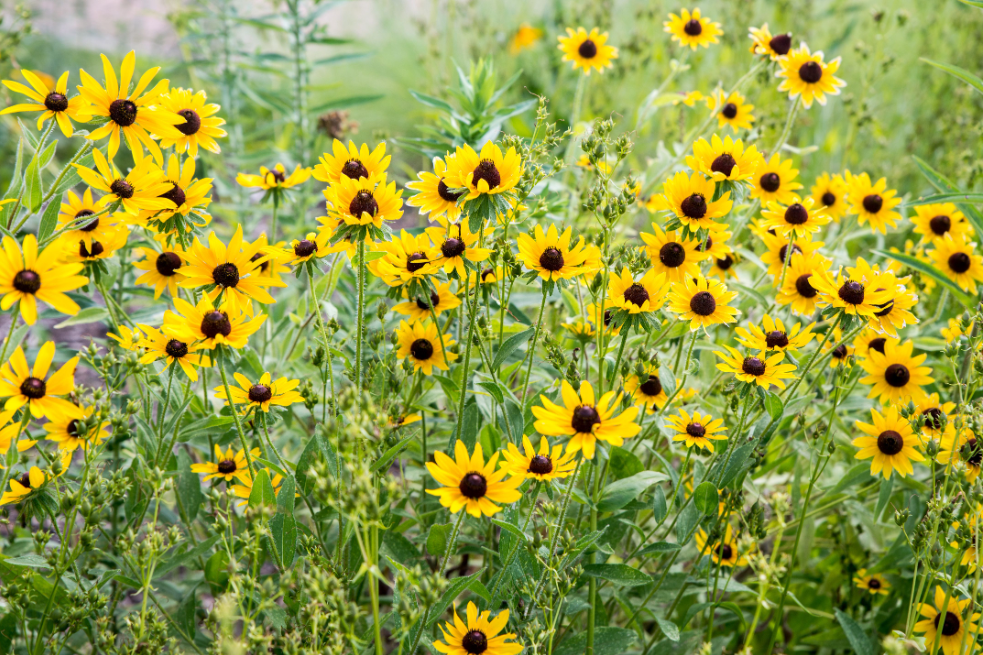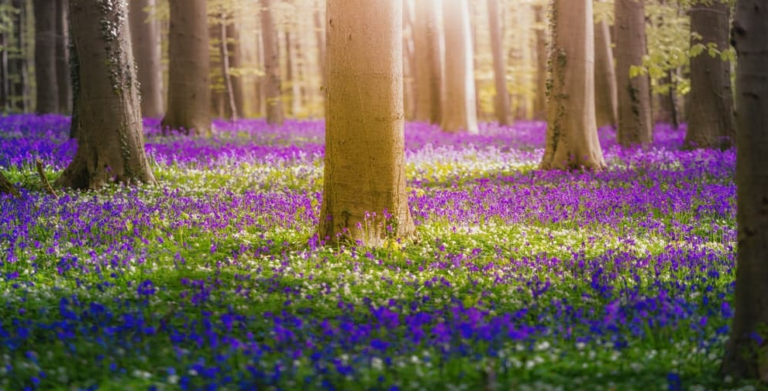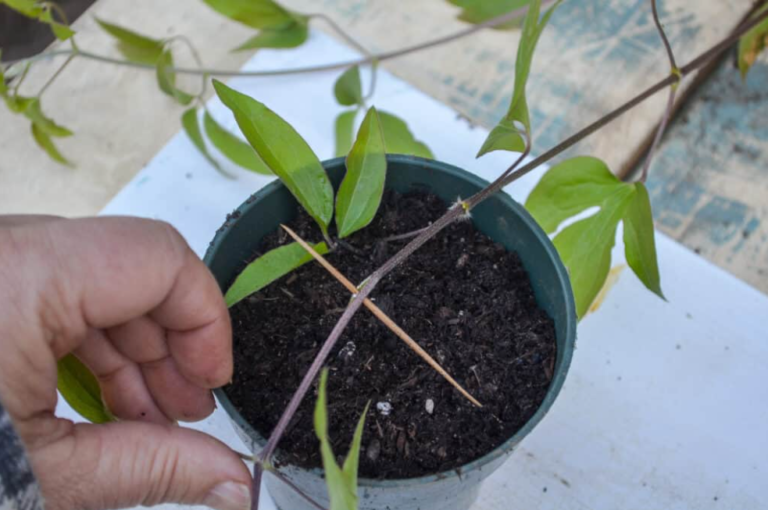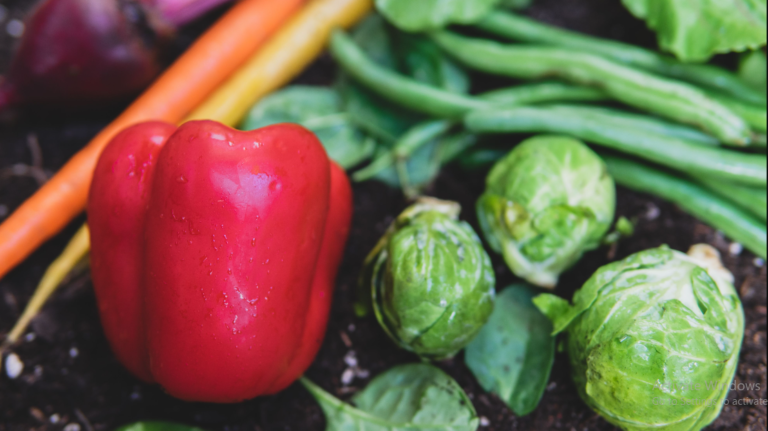How to Plant, Grow, and Care for Black-eyed Susans
Black-eyed Susans are native to North America and are one of the most popular wildflowers grown. Also called Rudbeckias, this daisy-like flower blooms from June to September, often blanketing open fields with their golden-yellow beauty, surprising the passerby.

About Black-eyed Susans
Black-eyed Susans have become naturalized in Zones 3 to 9. And while some species of Black-eyed Susans have additional names—such as daisies—they all belong to the Rudbeckia genus.

The “black eye” is named for the dark, brown-purple centers of its daisy-like flower head. The plants can grow to over 3 feet tall, with leaves of 6 inches, stalks over 8 inches long, and flowers with a diameter of 2 to 3 inches. They are outstanding cut flowers that also do well in borders or containers.
Butterflies, bees, and other insects are attracted to the flowers for the nectar. As they drink the nectar, they move pollen from one plant to another, causing it to grow seeds that can move about easily with the wind. Note that they can be territorial in that they tend to squash out other flowers growing near them.
Some Black-eyed Susans are susceptible to leaf diseases. Some newer varieties are resistant to these diseases.
Planting
Black-eyed Susan thrives in full sunshine. It tolerates partial sun, but it will not bloom as reliably. Black-eyed Susan prefers rich, well-draining soil, although plants will tolerate low fertility.
When to Plant Black-eyed Susan
If direct-seeding, plant in moist, well-draining, warm (70º to 75ºF) soil.
Indoors, sow seeds 8 to 10 weeks before the last frost. Germination takes 7 to 10 days.
In most parts of North America, the ideal planting period is March to May.
How to Plant Black-eyed Susan
Cover seed lightly with soil. Sunlight is required for germination
Set seeds and plants close to deter spreading, or farther apart for a border and to prevent the spread of disease.
It’s best if the soil is fertile (not poor), though they can tolerate tough conditions.
Black-eyed Susans generally grow between 1 and 3 feet tall (though they can grow taller) and can spread between 12 to 18 inches, so plant seeds closer to prevent lots of spreading or plant further apart to make a nice border.
Growing
Remove faded or dead flowers to prolong blooming. Removing spent flowers and seed heads reduces self-sowing. Check plants regularly to see if they need watering. Make sure they don’t dry out, but also avoid excess moisture on leaves, which can encourage disease (provide plants with proper spacing).
Remove dead plant debris in spring to reduce the risk of infection. Divide perennial types every 3 to 4 years to ensure healthy plants and prevent excessive spreading.
Cutting back black-eyed Susan after flowering may result in a second, smaller bloom in late fall.
Leave some dried seed heads on the plants in the fall to attract birds.
After the first season, black-eyed Susans can reseed themselves.
To prevent underground spread, dig up rhizomes, making certain to remove the entire piece of root. Even a small section of rhizome can produce another plant.
Recommended Varieties
The familiar roadside Black-eyed Susans (Rudbeckia hirta) is actually a biennial in the wild and great for naturalizing. However, it is treated as a short-lived perennial in the garden. If you sow seeds 6 weeks before the last frost date, you’ll see flowers in the first year and they may return a few more seasons (but you can’t always count on it).
‘Becky Mixed’, offers a variety of colors for your garden, such as lemon-yellow, golden-yellow, dark red, and reddish-brown.
‘Sonora’, which has bright yellow flowers.
‘Toto’, which is a dwarf type and ideal for containers.
There are also true long-lasting perennials that will keep coming back and blooming year after year.
‘Goldsturmm’ Black-eyed Susans (Rudbeckia fulgida ‘Goldstrum’), which is known for its longevity and is a regular plant in late summer and fall gardens.
‘Sweet’ Black-eyed Susans (Rudbeckia subtomentosa) which has taller flowers and are ideal for a more naturalized garden or meadow.
‘Gloriosa daisies’ (Rudbeckia hirta ‘Gloriosa’) grow to be 12 to 36 ”tall and tolerate partial shade. They have giant, bi-color double flowers.
Finally, some Rudbeckia varieties are annuals such as the Clasping Sunflower (Rudbeckia amplexicaulis), a low-growing plant for the front of a border garden.
Harvesting
Cut flowers for display just before buds completely open. Use large blooms as centerpieces and smaller ones as accents. Change the water every day to keep them fresh. Vase lit is 8 to 10 days.
Pests / Disasters
These plants are susceptible to powdery mildew fungi, so begin an organic antifungal program if the lower leaves turn brown and twisted.
Slugs and snails
Aphids
Rust
Smut
Leaf spots
Luckily, black-eyed Susans are deer-resistant plants.
No one knows who Susan was, but the flower is linked with “Sweet William” in an old English rhyme. This species was long thought to be native only to our midwest, spreading to both coasts after colonists and western pioneers felled the forests to allow the highly-prolific seed to spread. But recent research proves Black-Eyed Susan was indeed seen as far east as Maryland in early colonial times. There are many species of rudbeckia, many of which have been hybridized into some of our most valued garden perennials. For related perennial species, see R. gloriosa.

For the last 4 years, I have been planting a large area for bees, butterflies, hummingbirds, wild birds, and other wildlife. A person cannot understand how important this all is until you actually do it and see just how big of an impact you can make for yourself and the wild things that live in our world! Last year I planted the black-eyed Susan seeds along with purple coneflower seeds, both from American Meadows. Just greenery last year, but this year … WOW !!!! An explosion of color in the area where I planted these in. I was taking pictures of these flowers and even noticed where a wild thing had curled up and slept at the feet of these gorgeous flowers. Bees and butterflies just love! I am extremely happy with the results of these seeds !!






